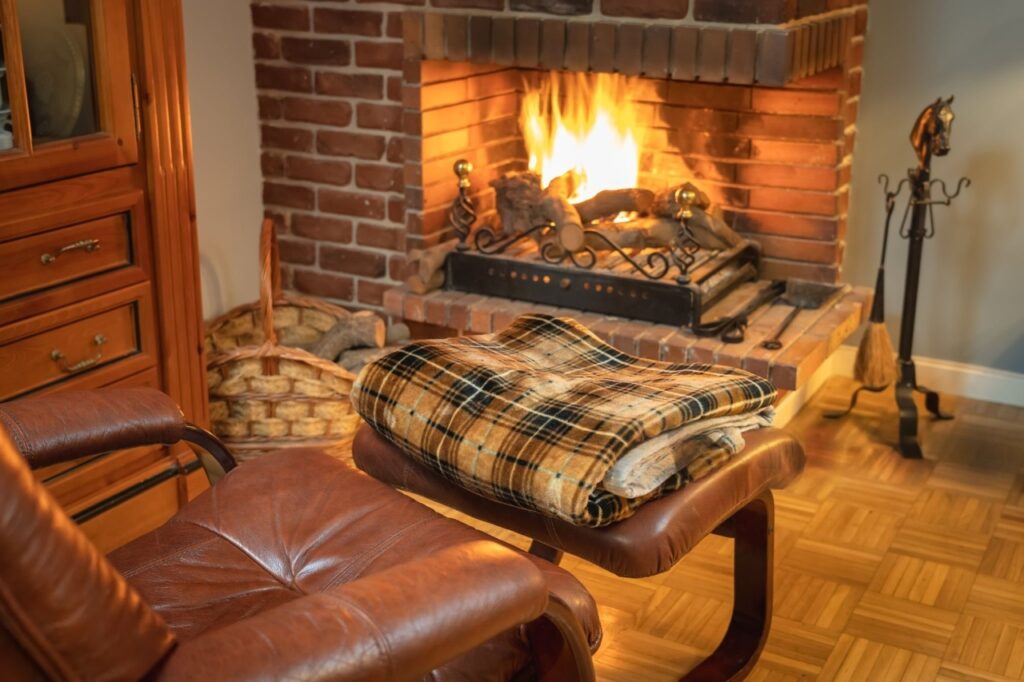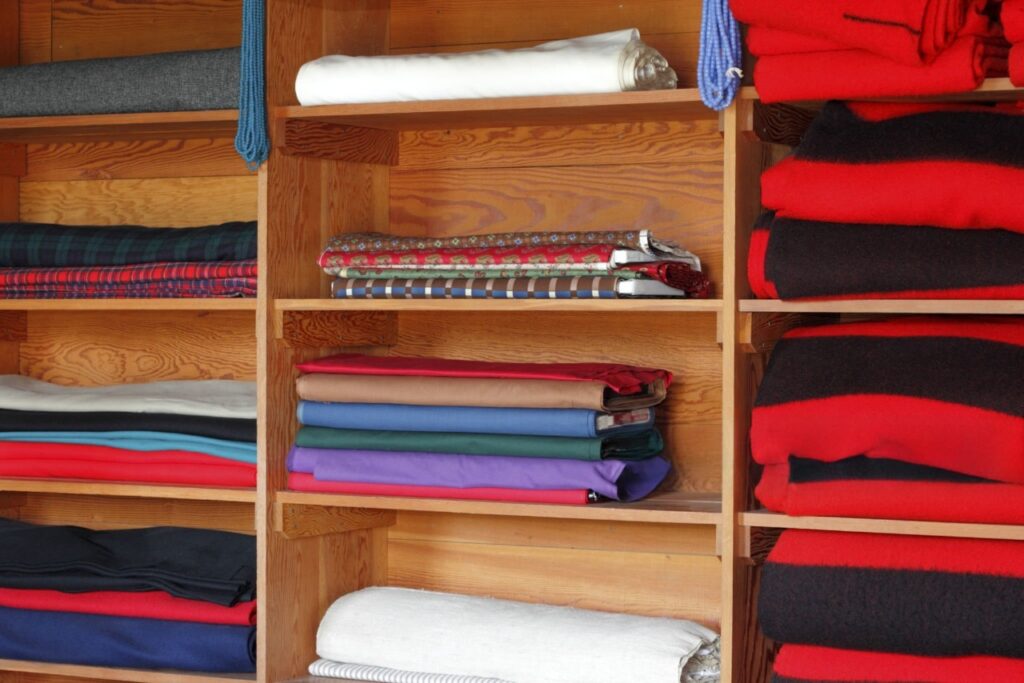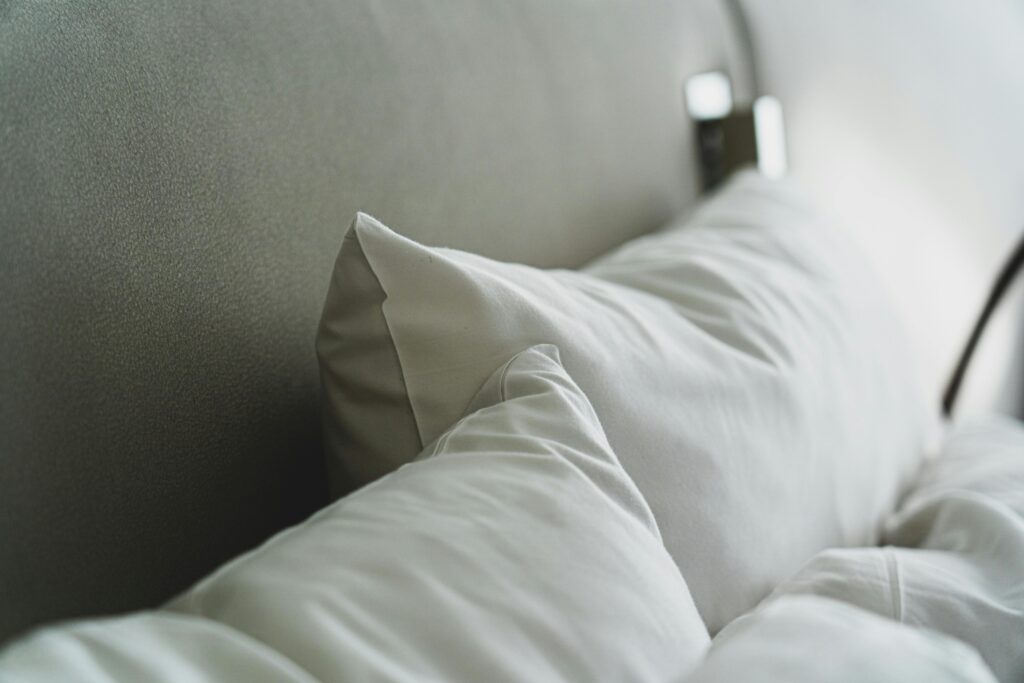
Stay cozy this winter with our premium Winter Wool Blanket! Soft, warm, and durable, perfect for cold nights. Shop now for the best quality wool blankets at affordable prices.
The Wool Blanket Epiphany: How a Scratchy Army Blanket Became My Lifelong Obsession
Let me take you back to my sophomore year of college, when my fashion sense consisted of band tees and my idea of “home decor” was taping beer caps to the wall. That’s when Grandma, bless her practical soul, gifted me what I initially thought was the worst present ever: a WWII-era army surplus wool blanket that smelled like mothballs and felt like it was woven from barbed wire.
Chapter 1: First Impressions (Or, How I Almost Donated This "Rag" to Goodwill)
When I first unfolded that olive drab monstrosity in my dorm room, my roommate actually gasped. “Is that… a horse blanket?” she asked, poking it suspiciously. The thing stood up on its own when folded, could probably stop bullets, and left red marks on my skin after brief contact. I shoved it under my bed, where it lived alongside dust bunnies and forgotten pizza coupons.
Then came The Night That Changed Everything.
Chapter 2: The Great Dorm Freeze-Out
It was January 17th – a date burned into my memory. Some genius in facilities decided our ancient boiler needed maintenance during the coldest week of the year. By 2 AM, our breath was visible in the air and my teeth were chattering so hard I worried about dental damage.
That’s when I remembered the scratchy demon under my bed.
What followed was eight hours of the most conflicted comfort I’ve ever experienced. The blanket:
- Scratched like hell for the first 20 minutes
- Smelled vaguely of a military surplus store’s back room
- Somehow transformed into a toasty cocoon by hour three
- Became the most coveted item in our dorm by morning
The Three Truths That Changed My Life:
1. Wool Doesn't Care About Your Feelings (And That's a Good Thing)
While my polyester comforter gave up at the first sign of adversity, that scratchy wool beast didn’t care that I’d mocked it. It just did its job with quiet, stubborn efficiency. There’s something humbling about being saved by something you underestimated. Now when I see people turn up their noses at wool’s texture, I just smile and wait for their first real winter emergency.
2. The Scratchiness Scale is Subjective
Through extensive fieldwork (read: forcing all my friends to touch my blanket collection), I’ve developed the Official Blanket Itch Index:
- Level 1: Cashmere (for people who complain about silk being “too rough”)
- Level 3: Merino (acceptable to urbanites)
- Level 5: Lambswool (where the real magic begins)
- Level 8: My army blanket (now worn soft, but still makes my niece recoil)
- Level 10: Raw sheep’s fleece (only for the truly committed)
3. The Wool Blend Betrayal
After my army blanket revelation, I went through a phase of buying every “wool blend” I could find. Big mistake. That $39.99 “60% wool” blanket from Target? More like 5% wool, 95% crushed dreams. Here’s how to spot the fakes:
- If it feels suspiciously soft right out of the package
- If the care tag says “tumble dry” (real wool would never)
- If the price seems too good to be true (it is)
Modern Wool: A Renaissance Story
Today’s wool blankets are the result of centuries of innovation meeting modern consumer expectations. My current favorites:
The Cloud Blanket: A merino-cashmere blend so soft my cat mistakes it for her mother. Downside: costs more than my first car.
The Workhorse: A tightly woven Icelandic wool number that could probably withstand a Viking raid. Secret trick: becomes softer with every wash (unlike my patience).
The Looker: A Japanese selvedge wool throw that’s almost too beautiful to use. Almost.
Epilogue: Where Is That Army Blanket Now?
After 15 years, that scratchy savior still holds a place of honor in my home. It’s been through:
- 3 apartments
- 2 cross-country moves
- 1 ill-advised attempt to dye it purple
- Countless “I told you so” moments when winter storms hit
It sits folded at the foot of my guest bed – not because I expect visitors to use it, but because every time I see it, I remember that sometimes the things we reject at first glance become the ones we can’t live without.
Types of Winter Wool Blankets

After years of blanket testing that’s left my bank account weeping and my linen closet bursting at the seams, I present to you the definitive (and highly subjective) wool blanket hierarchy. Consider this your survival guide for navigating the wild world of winter warmth.
🏆 The Gold Standard: Merino Wool
The Love Affair: My first merino wool blanket was like discovering electricity – how had I lived without this? Purchased during a particularly vulnerable moment at a boutique fiber festival (those artisans know exactly when to pounce), this $275 beauty changed everything.
Texture Profile: Imagine if a cloud and a baby lamb had a lovechild that was then raised by extremely polite British nannies. That’s merino.
Reality Check:
- The “merino wool” throw you found at HomeGoods for $59.99? About as authentic as a three-dollar bill. True merino demands sacrifice (of your discretionary income).
- My cat Peppercorn approves, which is the highest honor a textile can receive in my home.
- Bonus: Naturally odor-resistant, which is crucial for someone who eats an embarrassing amount of curry.
Best For: People who want to dip their toes into wool without committing to full-on scratchiness. Also perfect for smugly telling houseguests, “Oh this? Just merino.”
🥈 The Overachiever: Alpaca Wool
The Experiment: After reading one too many alpaca farm Instagram posts, I caved and bought a “moderately priced” ($350) alpaca throw. What arrived could have doubled as a NASA-developed thermal insulator.
Texture Profile: Like if cashmere went to the gym, got absolutely shredded, but retained its silky smooth demeanor.
Extreme Testing Conditions:
- Survived -10°F during a winter camping trip (I lasted 20 minutes)
- Caused actual night sweats in my 68°F bedroom
- Weighed approximately as much as a small child but somehow felt weightless
Warning Label Should Read: “May cause excessive confidence in your ability to survive arctic conditions. Not responsible for poor decision-making regarding winter hikes.”
💔 The Heartbreaker: Cashmere
The Seduction: Every fiber enthusiast falls for cashmere at least once. Mine was a cream-colored beauty from Scotland that cost more than my wedding dress (let’s not dwell on that).
Texture Profile: The textile equivalent of being kissed by angels while floating on a marshmallow.
The Dark Side:
- Requires the care of a priceless museum artifact
- Attracts red wine like it’s going out of style
- Develops holes if you so much as look at it wrong
- My husband refers to it as “the blanket that shall not be touched”
Best For: Displaying prominently when your fanciest friends visit, then quickly hiding away before anyone gets any ideas about actually using it.
🛠 The Tank: Military Surplus
The Origin Story: After my merino revelation, I went through a “back to basics” phase and bought three military surplus blankets for “research purposes.” My skin still remembers.
Texture Profile: Like being gently exfoliated by a very determined Norwegian grandmother.
Break-In Process:
- Initial use: “This is medieval torture”
- After 6 months: “Okay, maybe just my legs”
- After 2 years: “Actually… this is kind of nice?”
- After 5 years: “I WILL FIGHT ANYONE WHO TRIES TO TAKE THIS”
Pro Tips:
- Wash with cheap hair conditioner (the blue stuff works best)
- Fold with a cedar block to prevent moth attacks
- Excellent for convincing visitors you’re “rugged” and “outdoorsy”
Best For: People who enjoy earning their comfort through suffering, or those preparing for the apocalypse (same thing really).
The Verdict
After all this testing (and several questionable financial decisions), here’s what I’ve learned:
- Merinois your everyday luxury
- Alpacais for when you’re serious about warmth
- Cashmereis a beautiful, high-maintenance relationship
- Military woolbuilds character (and calluses)
Currently, my bed features a merino base layer with an alpaca topper – because adulthood is about making your own rules. And if anyone needs me, I’ll be here, buried under my woolen fortress, waiting for winter like it’s my Olympic event.
How to Pick Your Perfect Blanket (Without Losing Your Mind)
Look, I get it. You’re standing in a store rubbing a $300 blanket against your neck like a weirdo while your significant exchange glances that scream “we could have bought a nice dinner instead.” Been there. Here’s the real, no-BS guide to choosing wool blankets that I’ve developed through years of questionable financial decisions and one memorable incident involving a “machine washable” tag that lied.
The Neck Test (Because Your Skin Knows Best)
Forget fancy jargon – your neck doesn’t care about “grams per square meter.” Here’s how this works in real life:
- Find that sensitive spot right under your jaw (you know the one)
- Rub the blanket there like you’re testing a fine wine (but with more fabric fondling)
- Listen to your gut:
- “Ooh that’s nice” = Buy it
- “Hmm, not bad” = Maybe if it’s on sale
- “Jesus, is this made of steel wool?” = Put it down slowly and back away
Pro tip: If the salesperson gives you side-eye, just say “I have sensitive skin” with a dramatic sigh. Instant credibility.
The Spouse/Significant Other Veto (AKA The Reality Check)
Here’s how this plays out in actual relationships:
YOU: “Babe, look how cozy this is!”
THEM: flips price tag “That’s more than our car payment.”
YOU: “But it’s an investment!”
THEM: makes that face you last saw when you suggested getting a pet llama
Solutions:
- Buy it anyway and claim it was “on final sale” (works once)
- Point out how much you’ve saved by not buying coffee out (they’ll laugh, but try it)
- Wait until they’re sick and vulnerable, then say “This blanket would help you feel better”
The Cat Test (Nature's Finest Quality Control)
If you have a cat, you already know they’re the ultimate authority on comfort. Here’s how to properly test:
- Place blanket in prime napping territory
- Observe:
- Immediate biscuit-making = Blanket gold
- Casual sniff and walk away = Mediocre
- Uses it as a scratching post = Return immediately
Warning: If your cat loves it too much, you may never get it back. My $400 alpaca throw now permanently belongs to Mr. Whiskers.
Real World Considerations (That No One Talks About)
- Will this blanket survive an accidental red wine incident? (Important for book club nights)
- Does it look good with your couch? (Because let’s be honest, it will live there 80% of the time)
- Can you justify it to your mother when she visits? (“Yes mom, people DO spend this much on blankets”)
How to Not Destroy Your Wool Blanket (Like I Did)

Let me set the scene: It was 3 AM on a Tuesday when I decided my prized Icelandic wool blanket “smelled a little off.” Never mind that the tag screamed “DRY CLEAN ONLY” in all caps – I was armed with Google and a dangerous amount of confidence. “How bad could a gentle hand wash be?” I asked my half-asleep reflection. Friends, I was about to find out.
The Crime Scene:
- Victim: One heirloom-quality wool blanket (RIP)
- Weapon: “Delicate” cycle and lavender-scented detergent
- Accomplice: My stubborn belief that care labels are “just suggestions”
The Aftermath:
What emerged from my washing machine resembled a doll blanket more than the queen-sized beauty I’d started with. The fibers had felted together so tightly you could’ve used it as a bulletproof vest. My husband’s “I told you so” look lasted approximately three weeks.
What I Learned the Hard Way:
1. Washing: It's Not Just About Temperature
- Cold water is non-negotiable (hot water = instant felting)
- Wool-specific detergent (like Eucalan) is worth every penny – regular detergents strip wool’s natural oils
- The “swish and soak” method is your friend: no agitation, no wringing, just gentle persuasion
2. Drying: This is Where Dreams Go to Die
- Lay flat on a drying rack (not the one you use for delicates)
- Rotate periodically like you’re babysitting a fussy toddler
- Never, ever hang dry unless you want a blanket shaped like a hourglass
- Radiators are the devil’s invention when it comes to wool
3. Storage: The Moth Prevention Protocol
- Cedar blocks > mothballs (unless you enjoy smelling like grandma’s attic)
- Vacuum-seal bags are tempting but trap moisture – opt for breathable cotton storage bags instead
- Fold with acid-free tissue paper to prevent creases (yes, really)
- Check stored blankets monthly like you’re running a wool security detail
Pro Tip from a Reformed Wool Murderer:
If you absolutely must wash a questionable blanket, test a corner first. I now keep a 4″ square of each blanket type in my “hall of shame” as a cautionary reminder.
The Redemption Arc:
Through tears and many credit card statements, I’ve developed a foolproof system:
- New blanket arrives
- Immediately photograph care tag (because I will lose it)
- Set calendar reminder for professional cleaning
- Tell everyone in the house it’s off-limits (including the cat)
Current Status:
Five years later, my replacement blanket remains pristine. It sits in smug judgment of my laundry room, silently whispering “don’t you dare” every time I walk by with detergent. Some lessons only need learning once. (Okay, twice. Fine, three times max.)
Wool Blanket Hacks (They Don’t Want You to Know)
1. Emergency Cloak
- Stuck in a drafty apartment? Wear your blanket like a cape. No shame.
2. Guest Bed Trick
- Drape a wool blanket underthe sheets. Instant heated bed.
3. The Decoy Blanket
- Keep a cheap one on the couch so your dog/cat/kids leave the nice one alone.
FAQs About Winter Wool Blankets
❓ Q1: Is a wool blanket too hot for summer?
Not necessarily! Lightweight wool (like Merino) breathes well and can be used year-round.
❓ Q2: How do I stop my wool blanket from shedding?
Gently vacuum or shake it outside. Shedding decreases over time.
❓ Q3: Can I machine wash my wool blanket?
Only if the label permits. Use a gentle, wool-safe cycle with cold water.
❓ Q4: Why is wool more expensive than synthetic blankets?
Wool is a natural, renewable material that requires careful processing, making it pricier but longer-lasting.

❓ Q5: Are wool blankets safe for babies?
: Yes, but choose super-soft Merino or Cashmere to avoid irritation.
Final Thoughts (From Under My Blanket Fort)

A great wool blanket isn’t just bedding—it’s a lifelong companion. My oldest is 12 years old, slightly pilled, and still the first thing I grab when the temperature drops.
So tell me: What’s your wool blanket story? Do you have a favorite? A tragic laundry disaster? A partner who rolls their eyes at your collection? Let’s commiserate in the comments.
Now if you’ll excuse me, I have to go “just look” at some new merino throws online. (Pray for my bank account.)



